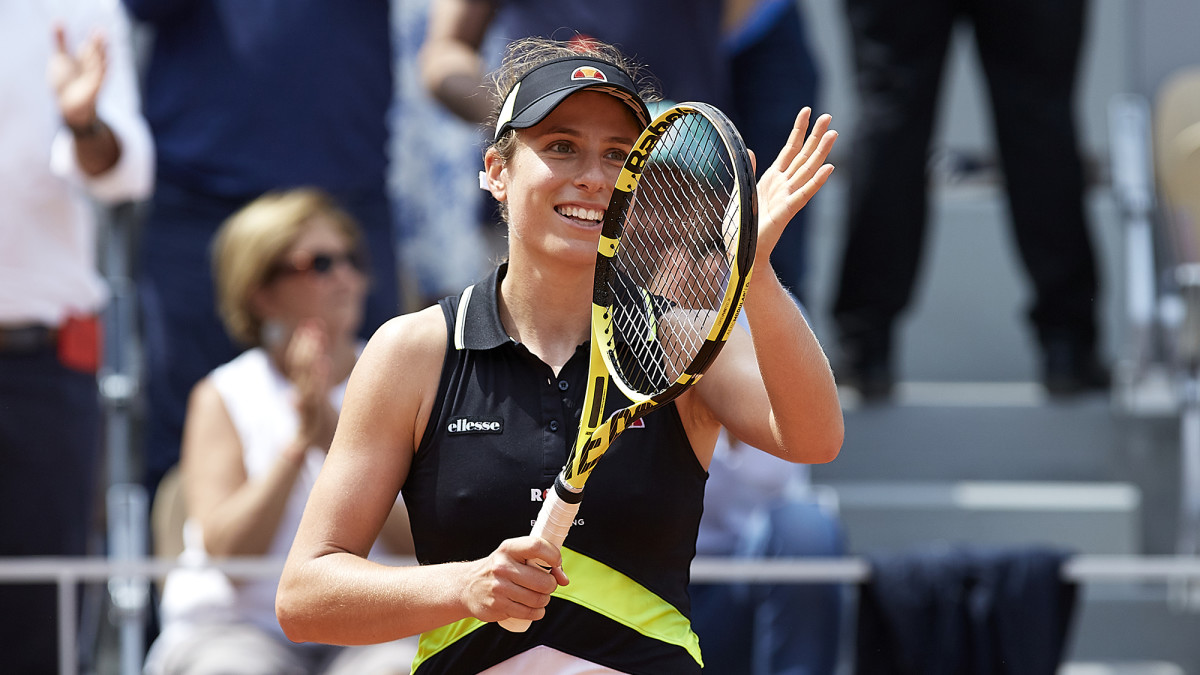Johanna Konta's Clay-Court Turnaround is No Coincidence

Johanna Konta racked up points in textbook fashion in Tuesday’s French Open quarterfinal.
She served out wide, opening the court for a sharp cross-court backhand and a subsequent volley winner. She served down the T, sending Sloane Stephens sliding from side-to-side.
Her attention focused on the process of each point, not the outcome. It worked to perfection—Konta beat Stephens 6-1, 6-4, dropping only one point on her serve in the second set...and it was a double fault.
Outcomes were better left in the past, after all, at least at Roland Garros. Konta entered this tournament having never won a main-draw match at the French, calling into question her ability to make a deep run on the dirt. Still, she never let her lack of success dampen her enthusiasm for the event.
Unlike a handful of players—Madison Keys, Belinda Bencic and Nick Kyrgios, to name a few—who voiced dislike for terre battue, the slowest surface in tennis, Konta has embraced clay despite years of dismal results on it.
“I’ve never doubted my ability to play on this surface,” she said after her quarterfinal victory over world No. 7 Stephens. “Results-wise, it hasn’t gone my way as much as I would have liked. But with the things I’m working on, it can only help me on this surface.”
Konta, seeded 26th, hired Dimitri Zavialoff last year, who coached Stan Wawrinka and Timea Bacsinszky. Zavialoff has added greater variety and aggression to Konta’s previously monotonous style and helped her play higher percentage tennis.
The 28-year-old British star has quietly put in practice hours and matches to lift her clay court game. Results began to show in late April, when she reached the finals in Morocco. Weeks later, she was in the finals in Rome, notching three-set victories over tough opponents like Stephens and adroit clay-courter Kiki Bertens.
Stephens delivered a sluggish first set on Tuesday, but Konta was prepared for the 2017 U.S. Open champion to raise her level at any time. That never happened. Usually a dominant baseliner who goes for broke at opportune times, Stephens looked depleted of energy and inspiration in windy conditions, committing copious unforced errors and failing to move her feet. It was clear a big comeback wasn’t going to come from last year’s French Open runner-up, who thought the loss was little a fault of her own.
“There is not much you can do when someone is playing like that,'' Stephens said. ''I didn't get a chance to really get into the match.”
Konta talks about several tight victories this year that have fed her self-belief. One came at the Fed Cup in April, when she made a remarkable comeback over Kazakhstan’s Yulia Putintseva, to give Britain a 3-1 victory. Putintseva knocked out Konta in the opening round of last year’s French Open.
The British No. 1 holds firm that improvements to her game will bear fruit beyond the clay-court season.
“I strongly believe the way we work translates to all the surfaces,” says Konta.
Born in Sydney to Hungarian parents, Konta moved to the U.K. at age 14. She started representing Britain in 2012 when she became a citizen.
Konta has made the semifinals of the Australian Open and Wimbledon and reached her career-high ranking of No. 4 in July 2017. On Tuesday, she became the first British woman to reach the French Open semifinals since Jo Durie in 1983.
Unlike her next opponent, teenager Marketa Vondrousova, Konta has several big stage-experiences to reference that could give her an edge in Friday’s semifinal.
“There’s got to be some benefit that I’ll be feeling from being in this position before,” says Konta.
Her left-handed opponent may be unseeded, but she’s poised to challenge Konta’s rhythm with crafty drop shots, lobs and angles. The Czech 19-year-old Vondrousova saved three set points against Petra Martic in the first set of their quarterfinal match.
She took an early lead in the second set as Martic battled demons after dropping the first set. The Croatian fought back to 5-5 in the second set but Vondrousova converted on the fourth match point.
Konta beat Vondrousova in three sets this year in Rome. She used her targeted serve to take early control of points and played high percentage rallies, stepping in to deprive Vondrousova of time. She’ll likely maintain a similar strategy on Thursday, but it’s hard to predict how Vondrousova will respond this time. The crafty youngster has yet to drop a set in Paris.
After Tuesday’s quarterfinal victory, Vondrousova called Roland Garros her “lucky place.” She’ll need more than luck to outlast a laser-sharp Konta, who has shown that clay can be her friend.





